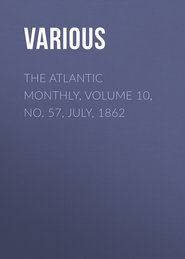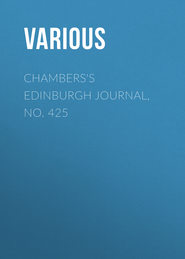По всем вопросам обращайтесь на: info@litportal.ru
(©) 2003-2024.
✖
The Brochure Series of Architectural Illustration, Vol. 01, No. 03, March 1895
Автор
Год написания книги
2019
Настройки чтения
Размер шрифта
Высота строк
Поля
Whether this capital was originally intended for S. Vitale or some of the other churches of Ravenna we cannot state, but at all events it is a fitting companion for the others illustrated in this number.
The Brochure Series
of Architectural Illustration
PUBLISHED MONTHLY BY
BATES & GUILD,
6 BEACON STREET, BOSTON, MASS
An illustrated catalogue has come to be one of the important features of exhibitions of architectural drawings, and these catalogues are now exceedingly valuable records of recent progress in architecture. The contributions of the present year to this department of an architect's library are especially notable. Of the catalogues which have come to our notice, that of the architectural exhibition at the Academy of Fine Arts in Philadelphia is in point of illustration the most complete, and shows the most judicious selection of material. In this there was a marked endeavor to give as large a number of geometrical drawings as possible, and it is unquestionably a move in the right direction. The desire for the picturesque, which has been until recently the ruling motive with American architects, has had its day, and trained and conservative designers have gradually taken the place of the pyrotechnic draughtsman of the past. The change has been working gradually to be sure, but scale and detail drawings both in the exhibitions, which of necessity are intended to appeal to a more or less popular taste, and in the professional journals are from year to year growing more prominent. In their recognition of this tendency, the Philadelphia catalogue committee are to be highly commended.
The same trend may be observed in a little less marked degree in the Architectural League catalogue. The exhibitions of the League have for years been the models by which minor exhibitions have been ruled, and its catalogue has been a guide to all others. As usual there is a great deal of valuable and interesting material presented in its illustrations.
The Catalogue Committee of the St. Louis exhibition have made a departure from the general rule, and increased the size of their pages, allowing the use of much larger plates. In some of the drawings this is a distinct advantage, and their catalogue gains in consequence.
The Boston Society of Architects and the Boston Architectural Club will hold a joint exhibition in April, and their catalogue now promises to be a very creditable publication.
In the recent draughtsmen's competitions, Boston has been more than ordinarily fortunate. The medal in both the competitions of the Society of Beaux-Arts Architects has come to Mr. F. M. Mann, of the Massachusetts Institute of Technology, and a number of the first and second mentions have also come to Boston. In fact, nearly if not quite all the designs sent from Boston have received some recognition at the hands of the jury.
A complimentary dinner has been arranged for by the M. I. T. Architectural Society in honor of the winners of the last competition.
The annual competition for the Architectural League gold medal, which was awarded to Mr. A. H. Wright, also resulted in adding another victory to the credit of Boston draughtsmen.
Interest in these contests is not purely local, however, for Philadelphia, Rochester, and several other cities have furnished contributors and shared the honors. Mr. H. L. Duhring, Jr., of Philadelphia, was awarded the Architectural League silver medal.
Fulfilling the bequest of the late Arthur Rotch leaving $5,000 to the Boston Architectural Club, this sum has been paid to the treasurer of the club by the executors of Mr. Rotch's estate. The income only is to be expended in the purchase of books to form an architectural library. This is only one of many indications that the architectural clubs of the country are recognized as permanent and established institutions. With the spread of this feeling their influence will grow in importance, and as the working foundation of the profession they deserve all the encouragement that can be given them.
The Cleveland Architectural Club
There are none of the now numerous architectural associations of the country which can more deservingly congratulate themselves upon the early success of their first few months of existence than the Cleveland Architectural Club, which was organized on the 22d of last November, and is now only four months old.
Its original members, fifteen in number, met in the office of Messrs. Coburn & Barnum, and here the meetings for the few succeeding weeks were also held.
It soon became evident that a wide field of usefulness was open to the new organization, and a permanent location of its own would become necessary. Such a location in the heart of the city, with all necessary conveniences, was found in the Garfield Building, and the new rooms have been properly fitted up for the use of the club.
With the purpose of making the influence of its work as far-reaching as possible, the restriction which has commonly been applied in other similar clubs, limiting the membership to architects and draughtsmen, or at least limiting the number of non professional members, has been entirely done away with, and any one who may have an interest in architecture or the "allied arts" is eligible for membership. What will be the effect of this arrangement it remains for the future to decide. In some of the older clubs it has been found by experience that the professional membership was overbalanced and its work impeded by a too large non-professional element, and the professional lines have been closely drawn in consequence.
The work thus far entered upon is modest but of an important character, and if pursued with the earnest purpose which has marked the first few months will lead to a fruitful future.
Of the monthly competitions in design the one for March, the subject of which is a scheme for the public buildings of Cleveland, has attracted considerable attention, and the public exhibition of the designs will doubtless lead to profitable discussion outside the club. A plan which we believe has not been adopted here, but which has been the means of awakening considerable interest in the study of design in the clubs of New York, Philadelphia, and Boston, might possibly be followed to advantage. In the January number of The Brochure Series the competitions instituted by the Society of Beaux-Arts Architects were outlined. Of course with all the numberless calls upon his time, the average draughtsman does not have the leisure to properly study and render the drawings required in these competitions; but by the joining of forces four or five, or even more, men can easily work out such a problem, and in some respects the advantages to be gained are greater than is the case when an individual works alone. Several large tables can be provided in the club-rooms, and the problem worked up as a club design. This plan has been followed in the Boston Architectural Club with great success.
The study of academic design is of the utmost importance to the young architect, and unfortunately the opportunities for such study in the usual routine of office practice are not very extensive. The working out each season of two or three such designs as those required by the Beaux-Arts Society will be of material benefit to the older men who are already familiar with the academic methods of design, and of much more benefit to the younger men whose opportunities have been more limited. The criticism and suggestion of the older men in the profession is easily obtained while the work is in progress. Nothing could be better calculated to foster a certain esprit de corps, which is certainly a desirable quality in any club.
The personnel of the Cleveland Club is as follows: Benj. S. Hubbell, president; Harry S. Nelson, vice-president; Herbert B. Briggs, secretary; Perley H. Griffin, librarian; E. E. Noble, treasurer; W. D. Benes and Wilbur M. Hall, members of the executive board. The officers and Robert Allen, Frederick Baird, J. W. Russell, G. B. Bohm, Williard Hirsh, Ray Rice, Albert E. Skeel, and C. S. Schneider constitute the charter membership.
Books
Church of Sancta Sophia, Constantinople: A Study of Byzantine Building. By W. R. Lethaby and Harold Swainson. Macmillan & Co. 1894. 307 pages with illustrations. $6.50.
It seems especially fitting that a notice of Mr. Lethaby's work on the church of Sta. Sophia, or as he calls it Sancta Sophia, should appear in the same issue with the beautiful Byzantine capitals from Ravenna, which we publish this month. In the description of this work from Ravenna, on another page, the connection is pointed out between Constantinople, the capital of the Roman Empire in the East, and Ravenna, then the Western capital.
The work before us is an important and exhaustive study, both architecturally and historically, of this beautiful building, which Mr. Van Brunt has called "the central building of the world." Nothing has ever been done in enriching interiors which approaches in splendor the best work of the Byzantine builders, and Sta. Sophia, by general consent, is the most beautiful of the Byzantine churches; but its exterior is by no means without faults, and its claim for distinction would fall if supported only by this.
The book takes up in order the history of Sta. Sophia, with citations of various authorities for statements concerning its early history; accounts of the various vicissitudes through which it has passed; its construction, lighting, details, mosaics, etc., all carefully and conscientiously described, the descriptive portion based on a painstaking study of the building itself. The illustrations which accompany the text are numerous and excellent; there is no attempt to furnish illustrations at large scale, which are already accessible in Salzenberg.
The monumental work of Salzenberg, which has been the architect's reference book for Sta. Sophia, is referred to and largely quoted from.
The two articles by Mr. Henry Van Brunt and Prof. A. D. F. Hamlin, published in The Architectural Review, Vol. II., No. 5, and Vol. III., No. 2, will be found of considerable interest in connection with Mr. Lethaby's book.
Club Notes
When in our January issue it was announced that we should devote a certain amount of space and attention to the architectural clubs of the country, we had no idea of the extent to which these organizations had developed within the last year or two. The work of a few of the older clubs was familiar to us, but it is a surprise to find that nearly every city of importance in the United States has an active and flourishing society of draughtsmen and young architects. It may be well to suggest right here that any city which has not such an organization should look to its laurels.
Among the newer accessions to the ranks is the Baltimore Architectural Club. It is fortunate in being able to start with a strong, if limited membership. It is holding weekly meetings, and has already instituted a series of monthly competitions in design, for which a small cash prize is offered.
The list of officers is the best evidence of its seriousness of purpose and ability to accomplish an unlimited amount of good work.
The officers are: president, J. E. Sperry; vice-president, J. B. N. Wyatt; secretary, Louis E. Simon; and E. F. Baldwin, George Worthington, J. W. Case, and W. G. Keimig, together with the officers, constitute the Board of Control.
The Sketch Club of New York is following the lead of the Chicago Architectural Club in delegating to one or two of its members the office of Entertainment Committee for one evening, when these members act as hosts and provide for the entertainment of the club. This plan has resulted in an increased attendance at the meetings, and is giving general satisfaction.
An outgrowth of the Boston Architectural Club which has shown a great deal of vitality and in many ways justified its claim to a separate existence is the little club of twelve members known as the "P. D's." Without organization and with only the mutual desire for a sort of Bohemian companionship, these congenial spirits have worked together and amused each other for the last two years.
They are all members of the Architectural Club and among its most zealous supporters.
The mystic monogram of the club, the initials P and D contained in a circle, which was placed on their designs submitted in the two Beaux-Arts competitions, has probably set more than one interested person guessing its significance. Its primary meaning is said to be "Poor Draughtsmen."
Preceding the last regular meeting of the Philadelphia T Square Club an informal supper was held at "Bohemia," a charming rathsheller recently designed by Wilson Eyre, Jr., a member of the executive committee of the club. The president, Walter Cope, presided, while the fifty-four members present lubricated their supper with 158 steins of old musty ale.
The meeting which followed was of unusual interest, as the double programme brought forth a great many designs.
In the competition for a chapel located on the terrace of a wealthy gentleman's country house, Albert Kelsey, who submitted two sets of drawings, was fortunate enough to win both first and second mentions, while E. S. Powers was voted third place.
The competition for a pedestal for a monument was well contested, but the winner of the first place failed to claim his design. Mr. A. C. Munoz, a former winner of the McKim Travelling Scholarship, won second place; and Chas. Z. Klauder, third.
To the list of Architectural Clubs contained in our February issue should be added the following:—
Baltimore Architectural Club; secretary, Louis E. Simon, Builders' Exchange Building.
Cincinnati Architectural Club; secretary, John E. Zettel, 227 Main St.
Society of Beaux-Arts Architects
The Committee on Education proposes as the subject for its third competition.
A LARGE CITY CHURCH











